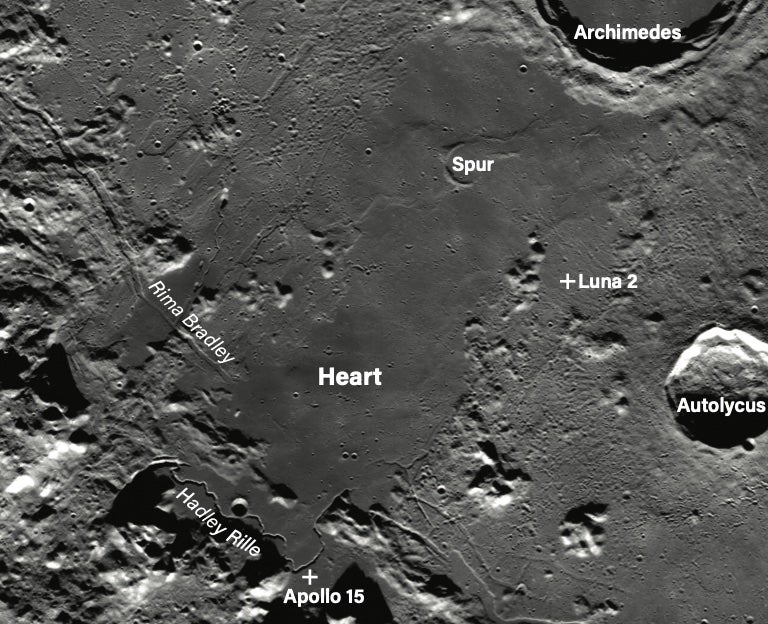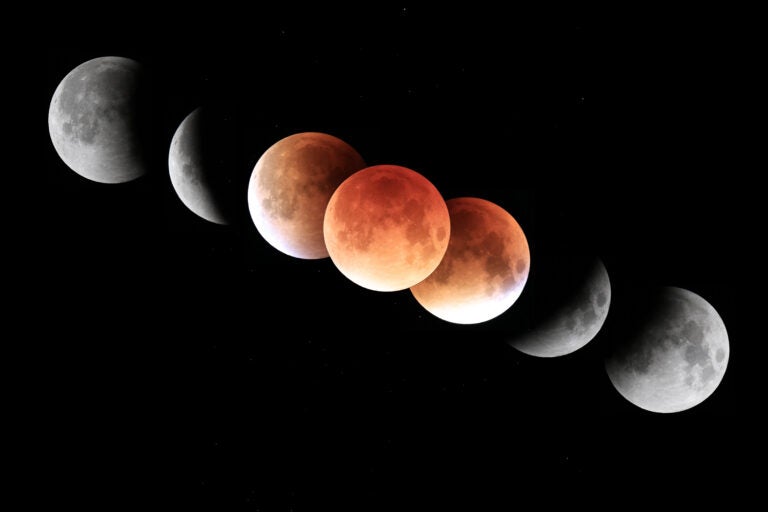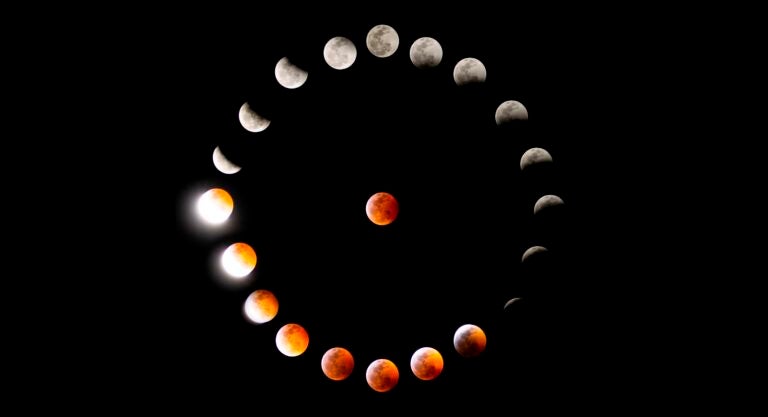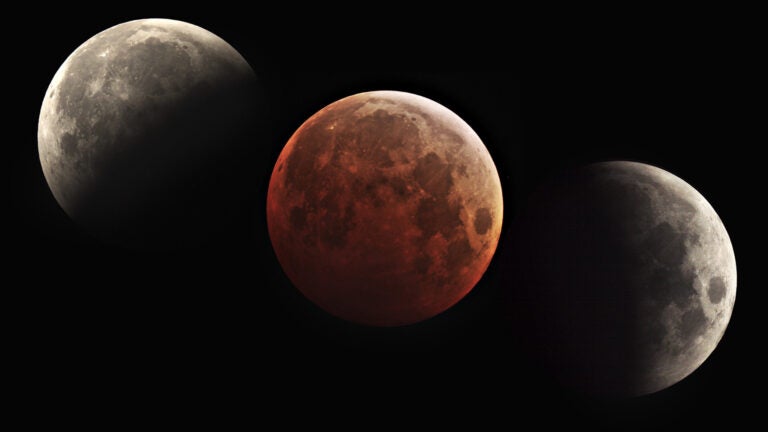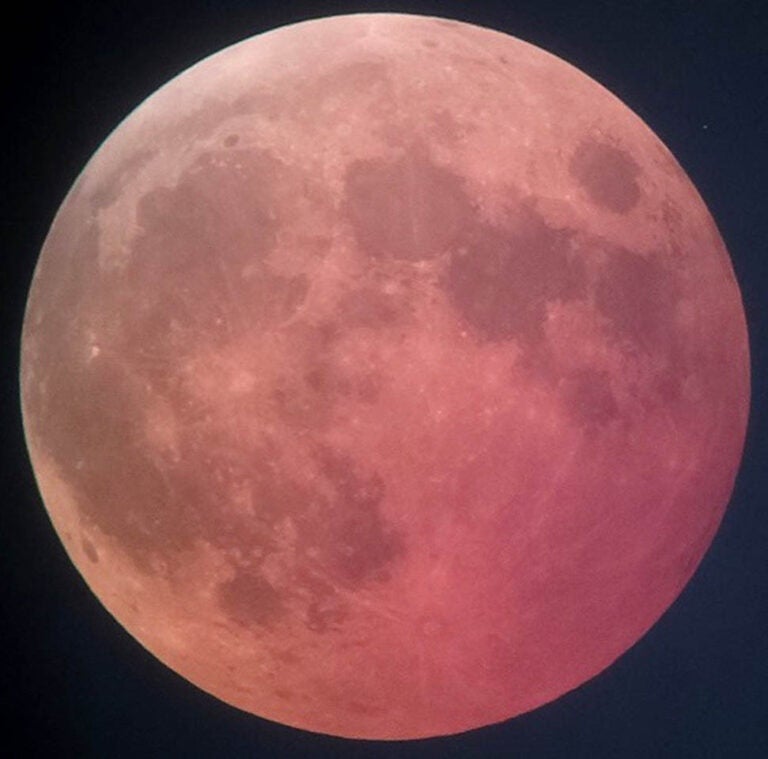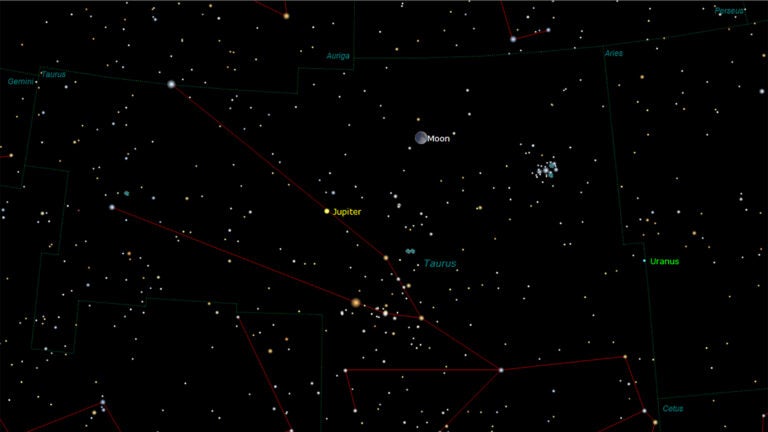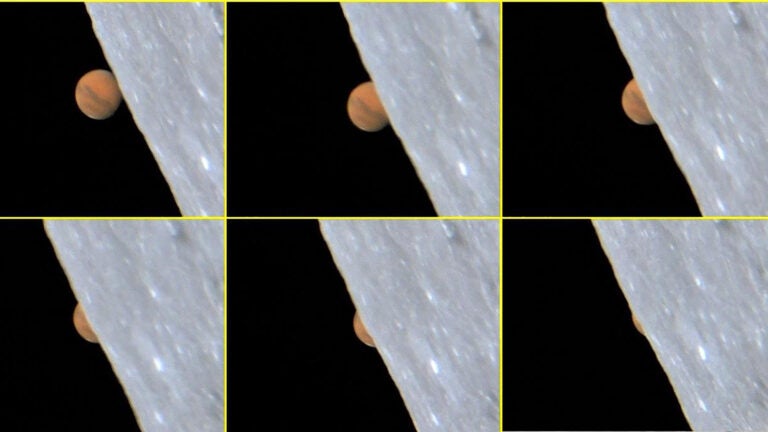Planetary atmospheres cause bright light to scatter. Atoms, molecules, and dust interact with photons, causing them to diffuse through increasingly dense layers as they near a body’s surface. On Earth, our atmosphere preferentially scatters blue light, so the daytime sky appears blue. And although Mars has an atmosphere that is some 100 times thinner than our planet’s, there’s still enough of it to cause the sky to appear a deep grayish blue, and if martian dust is whipped up by the tenuous surface winds, the sky turns a salmon pink.
On the Moon, there is no atmosphere, so there’s nothing to scatter photons, even from a brilliant source like the Sun. In fact, if you could find a deep enough shadow that shields your eyes from direct sunlight as well as light reflected off the surrounding terrain, you’d be able to see the stars!
There’s another factor that plays into images taken by the Apollo astronauts from the Moon’s surface, and that is the limited dynamic range of the film used to record their surface activities. The sunlight is so overwhelmingly bright that, in order to record highlights, the shadows and sky had to be heavily underexposed.
U.S. Naval Observatory
Washington, D.C.




